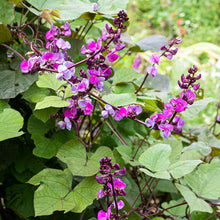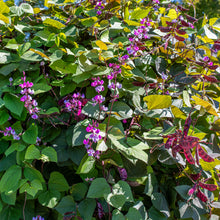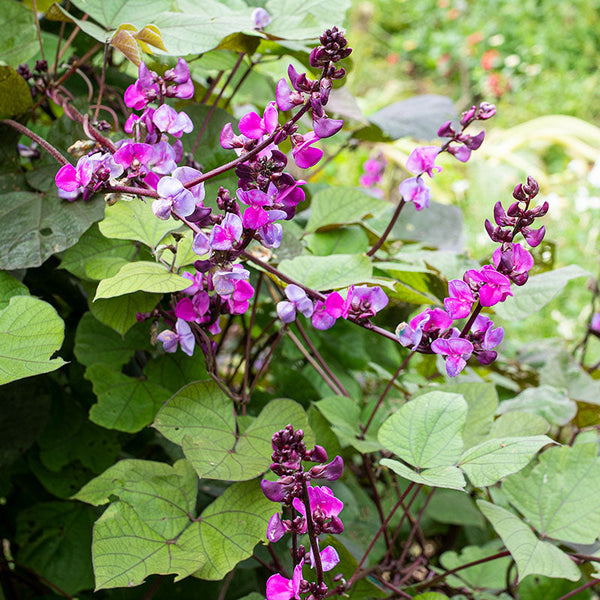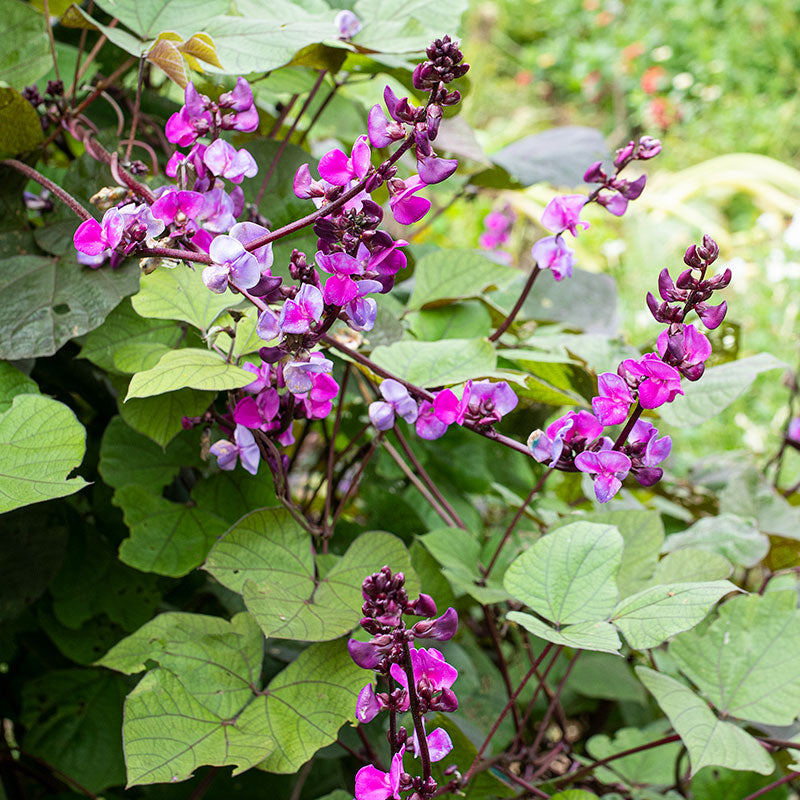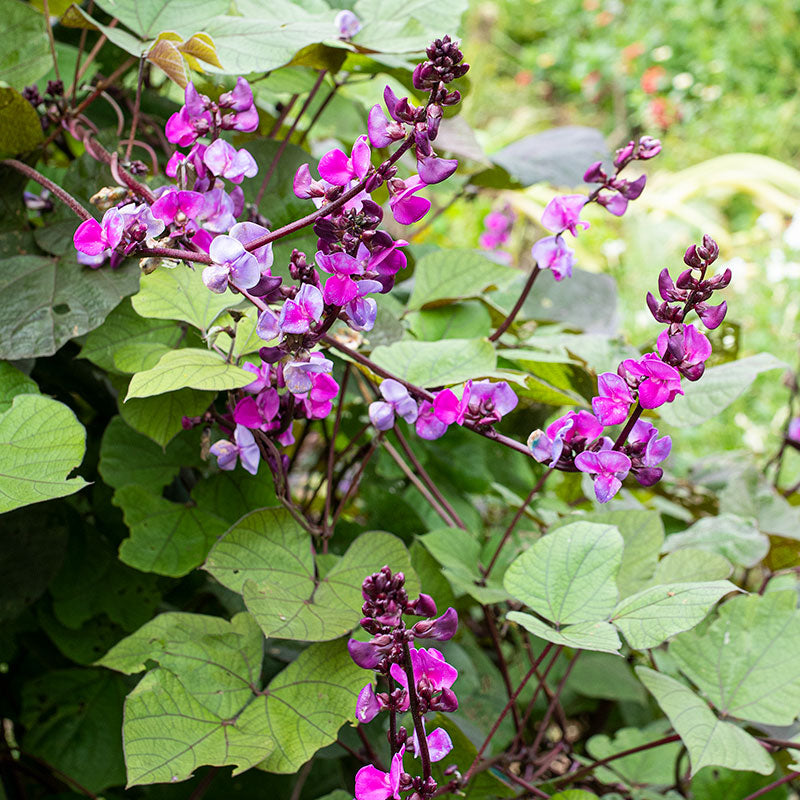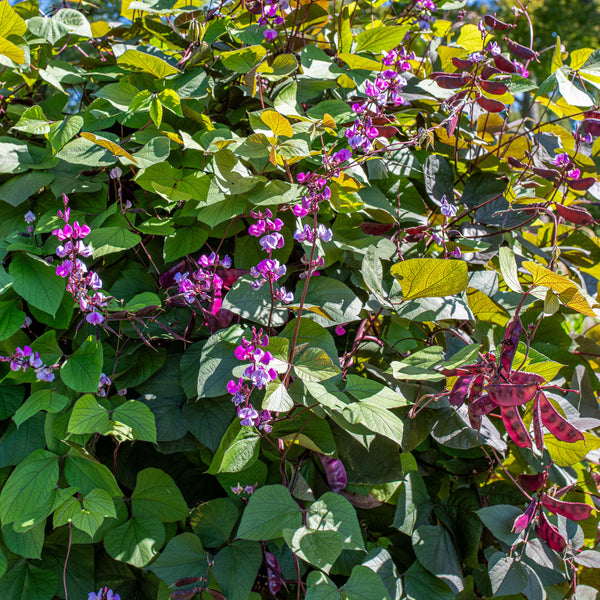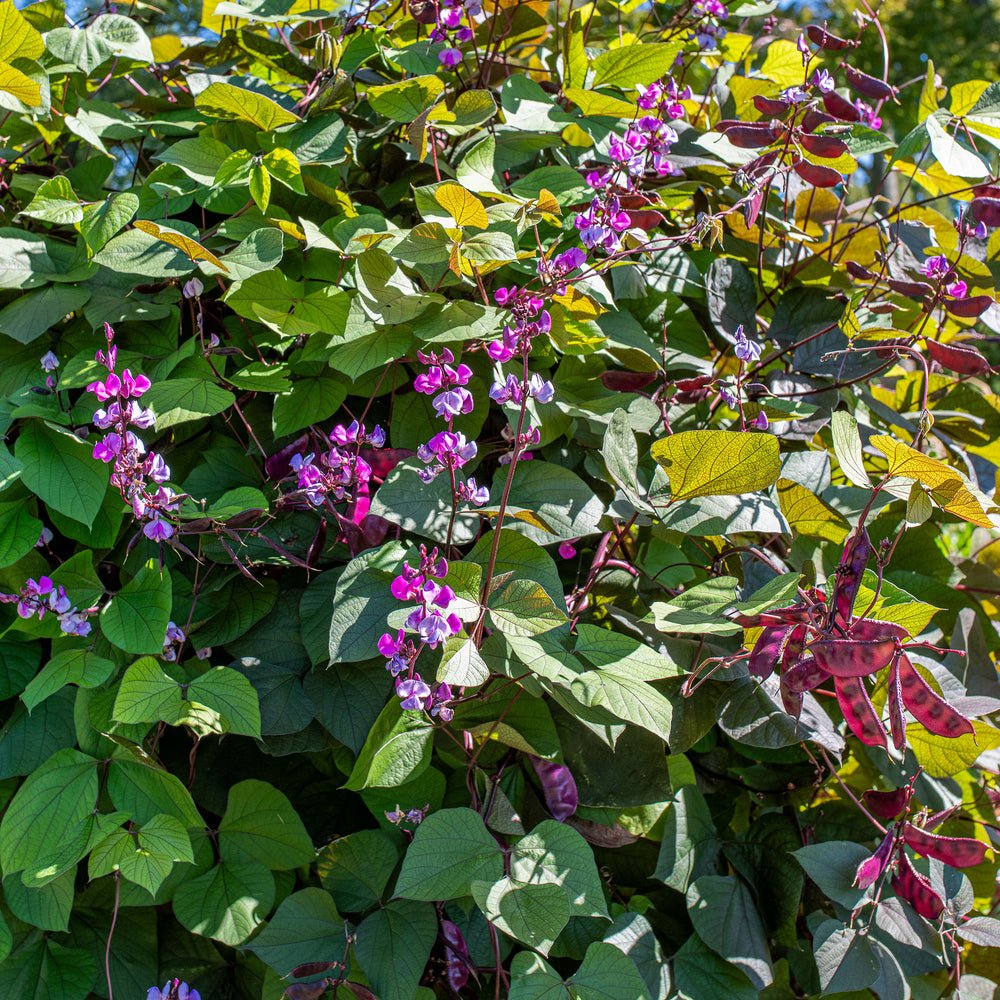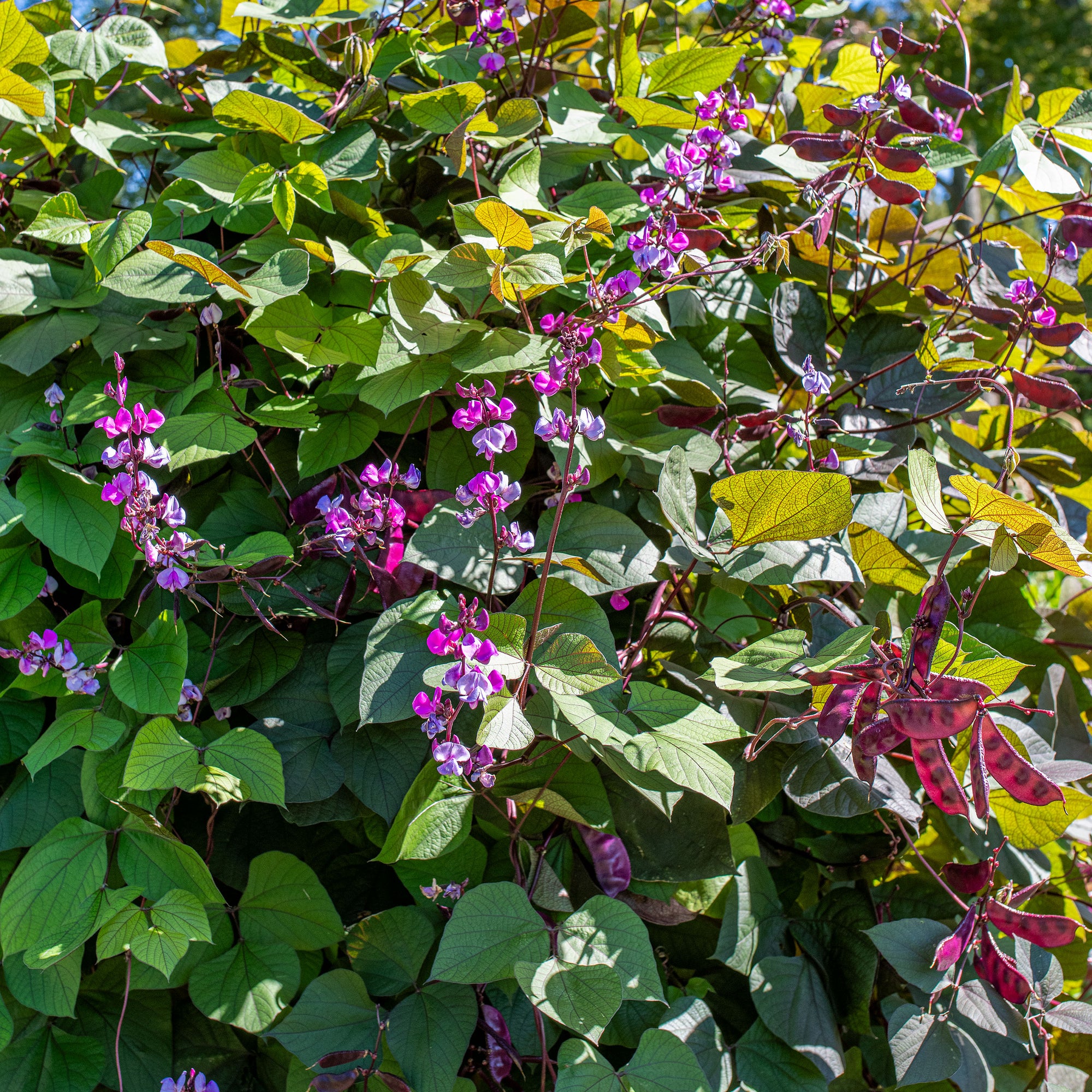SOWING INSTRUCTIONS
Starting Indoors:
Sow in pots 3-4 weeks before last frost. Keep at 65-75°F.
Starting Outdoors:
Recommended. Sow in place after last frost.
WHEN TO SET OUTSIDE
2-3 weeks after last frost, when temperatures do not drop below 45°F.
PLACEMENT & CULTIVATION
Hyacinth bean 'Ruby Moon' has large dark green leaves and upward curving flower wands of deep violet followed by decorative pods of glistening purple. They attract butterflies and do well in the heat and humidity of full summer, starting their bloom in midsummer and continuing until frost. The muscular vines twine up stalwart supports, such as an arbor or teepee, and if they top the structure, a quick pruning of that topmost growth will contain it somewhat. Dolichos prefer humus-rich, moist soils and additional organic flower fertilizer as they set buds. Poisonous mature beans, use caution. Beans edible only when cooked.
Watering Details:
1" per week, more during especially dry spells.
Fertilizer:
Mix in 2-4” of compost prior to planting. An application or two of flower fertilizer low in nitrogen will benefit flower formation.
When to Cut for Bouquets:
Cut when 3/4 of florets are open, and when pods develop along stems.






























